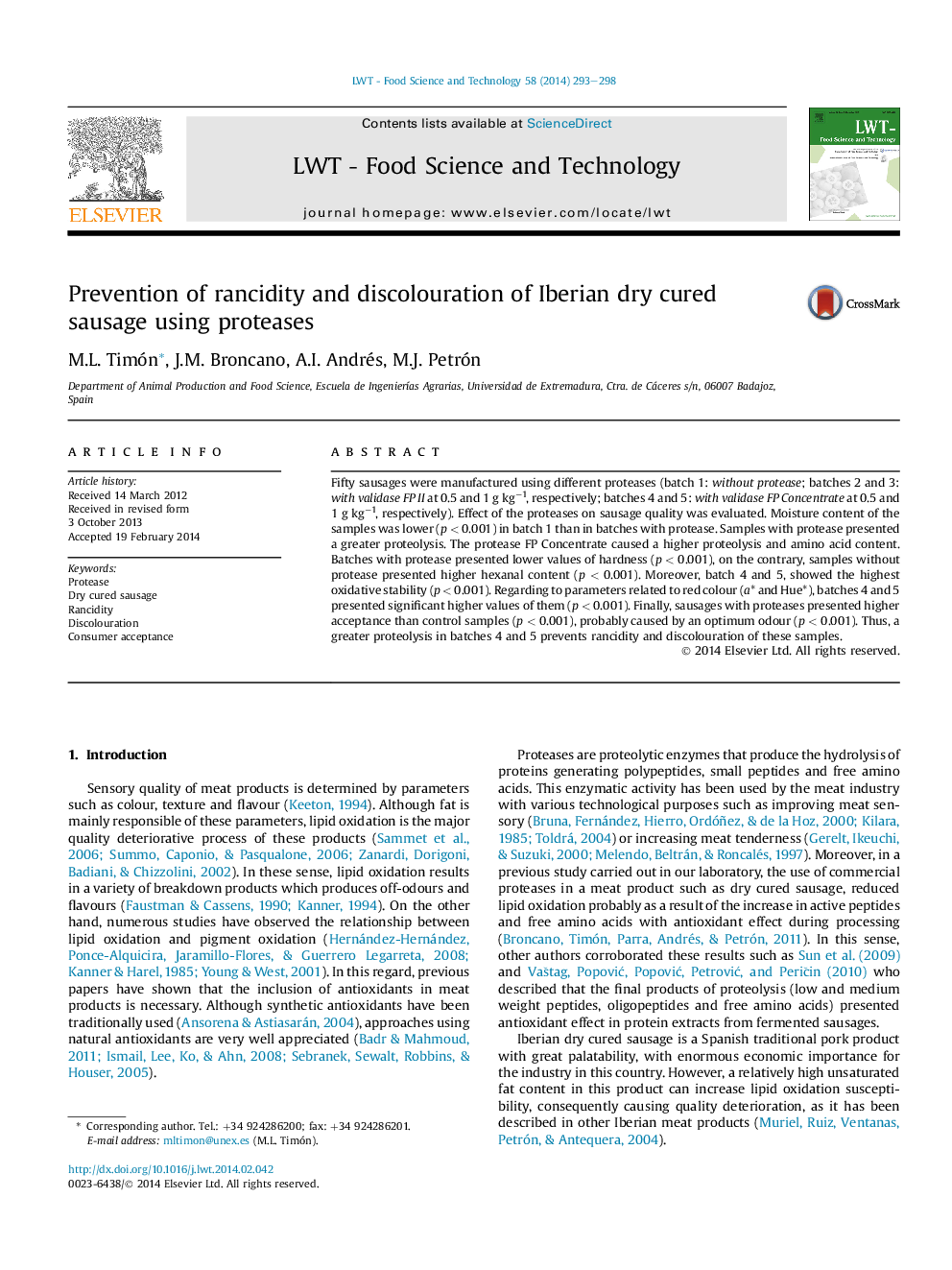| کد مقاله | کد نشریه | سال انتشار | مقاله انگلیسی | نسخه تمام متن |
|---|---|---|---|---|
| 6404129 | 1330899 | 2014 | 6 صفحه PDF | دانلود رایگان |
- Two proteases are used to prevent rancidity and discolouration in Iberian dry sausage.
- The quality of the sausages is improved when proteases are used.
- It is suggested the use of Protease FP Concentrate to improve oxidative stability.
- Sausage treated with proteases showed greater content of proteolysis products.
- Proteolysis products (<3Â kDa) could be responsible of the oxidative stability.
Fifty sausages were manufactured using different proteases (batch 1: without protease; batches 2 and 3: with validase FP II at 0.5 and 1 g kgâ1, respectively; batches 4 and 5: with validase FP Concentrate at 0.5 and 1 g kgâ1, respectively). Effect of the proteases on sausage quality was evaluated. Moisture content of the samples was lower (p < 0.001) in batch 1 than in batches with protease. Samples with protease presented a greater proteolysis. The protease FP Concentrate caused a higher proteolysis and amino acid content. Batches with protease presented lower values of hardness (p < 0.001), on the contrary, samples without protease presented higher hexanal content (p < 0.001). Moreover, batch 4 and 5, showed the highest oxidative stability (p < 0.001). Regarding to parameters related to red colour (a* and Hue*), batches 4 and 5 presented significant higher values of them (p < 0.001). Finally, sausages with proteases presented higher acceptance than control samples (p < 0.001), probably caused by an optimum odour (p < 0.001). Thus, a greater proteolysis in batches 4 and 5 prevents rancidity and discolouration of these samples.
Journal: LWT - Food Science and Technology - Volume 58, Issue 1, September 2014, Pages 293-298
